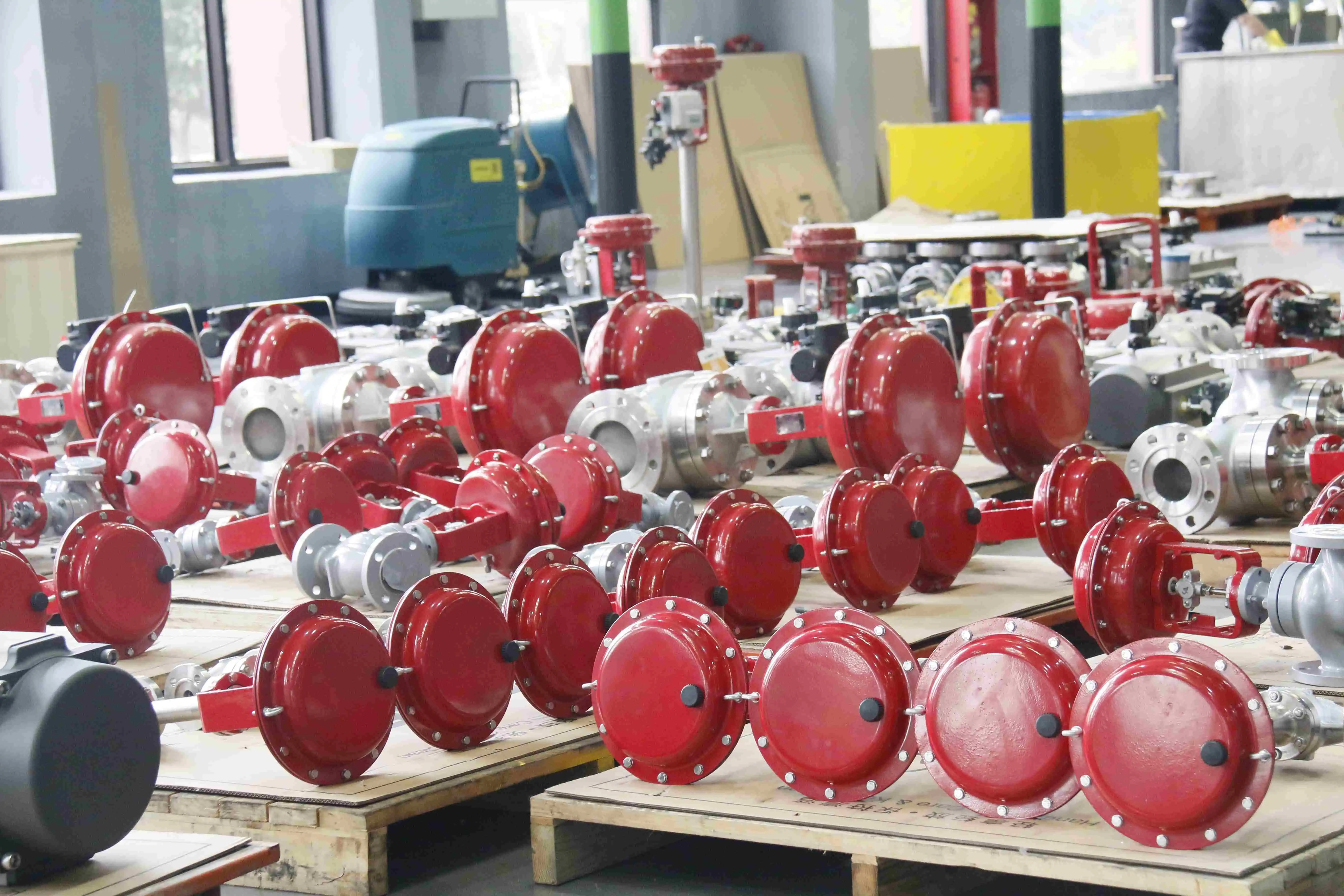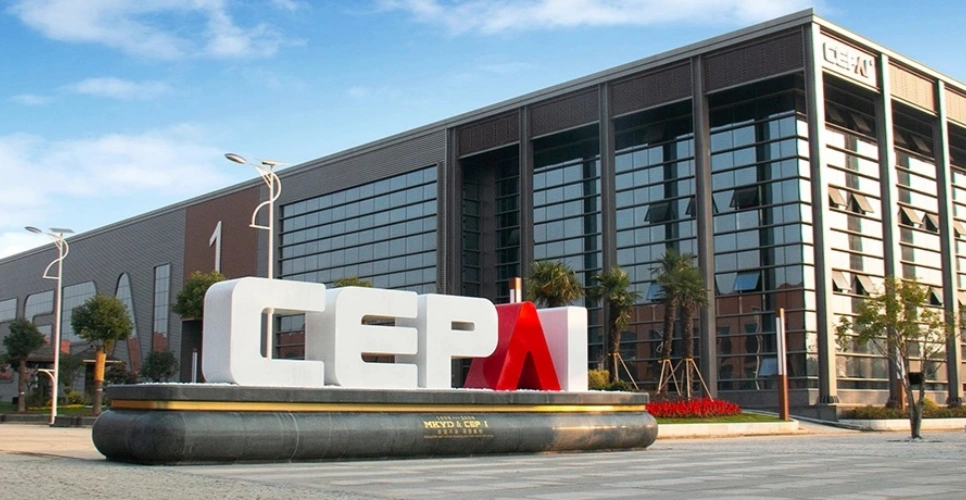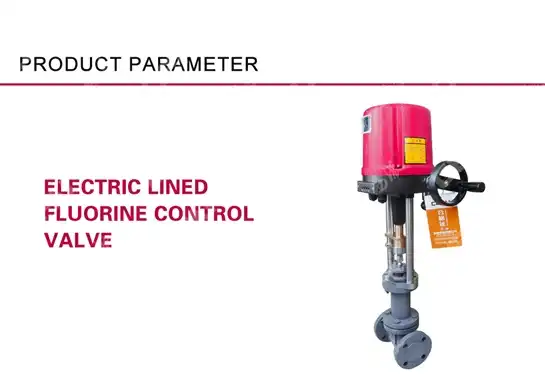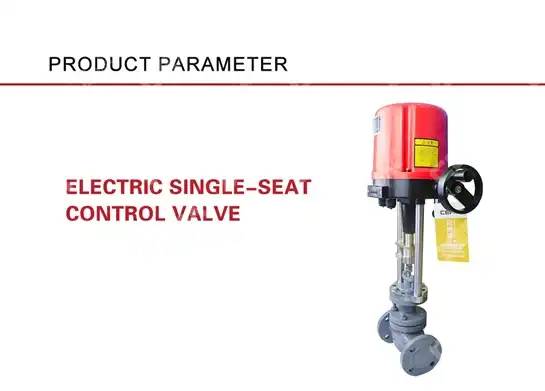Understanding the Design of a Simple Structure Pneumatic Control Valve
In industrial automation systems, control engineers frequently face challenges with flow regulation, pressure modulation, and process optimization across various applications. When dealing with compressed air systems, gas processing, or fluid control scenarios, understanding the fundamental design principles of a Simple Structure Pneumatic Control Valve becomes crucial for achieving precise operational control. This comprehensive guide addresses the critical design aspects, operational mechanisms, and practical applications of pneumatic control valves, providing engineers with essential knowledge to make informed decisions for their specific industrial requirements and process control needs.
Fundamental Components and Working Principles of Pneumatic Control Valves
The foundation of any effective Pneumatic Control Valve lies in its carefully engineered components that work in harmony to deliver precise flow control. The basic structure consists of several interconnected elements including the valve body, actuator mechanism, control elements, and feedback systems. The valve body serves as the primary housing containing the flow passage, while the actuator converts pneumatic signals into mechanical movement to position the control element accurately. Within the actuator assembly, the diaphragm or piston system responds to air pressure changes, translating these signals into linear or rotary motion. The spring mechanism provides fail-safe operation, ensuring the valve returns to a predetermined position during power failures or signal interruptions. Modern Pneumatic Control Valve designs incorporate advanced materials such as stainless steel components, PTFE seals, and specialized coatings to withstand harsh operating conditions while maintaining consistent performance over extended operational periods.

-
Internal Flow Path Design and Control Mechanisms
The internal geometry of a Pneumatic Control Valve significantly influences its flow characteristics and control precision. The flow path design determines pressure drop patterns, flow coefficients, and overall system efficiency. Globe valve configurations, commonly used in control applications, feature a linear flow path where the control element moves perpendicular to the flow direction, providing excellent throttling capabilities and precise flow modulation. The valve seat design plays a crucial role in achieving tight shut-off performance and minimizing leakage rates. Metal-to-metal seating arrangements offer durability for high-temperature applications, while soft-seated designs utilizing materials like PTFE or elastomeric compounds provide superior sealing performance for gas and liquid services. The relationship between the actuator force, spring compression, and process pressure determines the valve's operating characteristics and fail-safe behavior.
Advanced Design Features for Enhanced Performance
-
Pressure Balance and Flow Characteristics
Contemporary Simple Structure Pneumatic Control Valve designs incorporate pressure-balanced spool configurations that minimize the impact of upstream pressure variations on valve positioning accuracy. This design feature ensures consistent flow control performance across varying process conditions and reduces actuator sizing requirements. The pressure balance mechanism typically involves machined grooves and passages that equalize forces acting on different surfaces of the control element. Flow characterization represents another critical design aspect that determines how flow rate changes relative to valve stem position. Linear flow characteristics provide proportional flow changes throughout the valve stroke, while equal percentage characteristics offer fine control at low flow rates with increasingly larger changes at higher flows. The selection between these characteristics depends on the specific process requirements and control loop dynamics. The actuator sizing methodology considers multiple factors including process pressure differential, required flow coefficient, safety factors, and dynamic response requirements. Proper actuator selection ensures adequate force generation while maintaining fast response times and precise positioning accuracy. Spring range considerations affect both the operating pressure requirements and fail-safe positioning, making this selection critical for overall system safety and performance.
Material Selection and Construction Standards
-
Advanced Materials for Critical Applications
The material selection process for Pneumatic Control Valve construction involves comprehensive evaluation of process media compatibility, temperature ranges, pressure ratings, and corrosion resistance requirements. Standard body materials include carbon steel (WCB) for general service applications, stainless steel grades (CF8, CF8M) for corrosive environments, and specialized alloys for extreme temperature or highly aggressive media conditions. Internal components require particular attention to material selection due to direct contact with process fluids and exposure to wear mechanisms. Valve seats, stems, and trim components utilize materials ranging from standard stainless steel to exotic alloys depending on service requirements. Surface treatments such as hard facing, nitriding, or specialized coatings enhance wear resistance and extend operational life in demanding applications. Sealing system design incorporates multiple barrier concepts utilizing flexible graphite, PTFE, or elastomeric materials depending on temperature, pressure, and chemical compatibility requirements. The gland design accommodates thermal expansion while maintaining leak-tight performance throughout the operational envelope. Advanced packing configurations provide environmental sealing while minimizing stem friction and maintaining precise positioning accuracy.
-
Quality Assurance and Testing Protocols
Manufacturing quality control processes ensure consistent product performance and reliability through comprehensive testing protocols. Pressure testing procedures verify structural integrity and sealing performance according to international standards such as ANSI B16.104 Class VI for non-metallic seats and Class IV for metallic seating arrangements. These standards define maximum allowable leakage rates and provide benchmark criteria for valve performance evaluation. Dimensional inspection procedures utilize advanced measurement technologies to verify critical tolerances and ensure proper component fit-up. Surface finish specifications for sealing surfaces and flow passages directly impact performance characteristics and operational longevity. Quality management systems incorporating ISO 9001 principles provide systematic approaches to manufacturing control and continuous improvement initiatives.
Application-Specific Design Considerations
-
Cryogenic and Low-Temperature Applications
Specialized Pneumatic Control Valve designs for cryogenic service address unique challenges associated with extreme temperature conditions. Extended bonnet configurations provide thermal isolation between the process media and actuator components, preventing ice formation and maintaining proper operation. Special materials selection considers thermal contraction effects, brittleness at low temperatures, and compatibility with cryogenic fluids. The valve design must accommodate significant thermal stresses resulting from temperature cycling between ambient and cryogenic conditions. Flexible connections, expansion joints, and stress-relief features prevent structural damage while maintaining leak-tight performance. Insulation systems and heat-tracing considerations protect critical components from ambient temperature influences. Food and pharmaceutical applications require additional design considerations including surface finish requirements, material certifications, and cleaning validation protocols. Sanitary designs eliminate dead spaces, provide smooth internal surfaces, and utilize materials compatible with cleaning agents and sterilization procedures. Documentation requirements include material traceability, pressure testing certificates, and compliance with industry-specific regulations.

-
High-Pressure and Severe Service Applications
High-pressure Pneumatic Control Valve designs require enhanced structural considerations and specialized component arrangements. Thick-wall body construction, reinforced connections, and high-strength materials accommodate extreme pressure conditions while maintaining operational reliability. Pressure ratings extending to ANSI 600 class and beyond require careful attention to bolt sizing, gasket selection, and joint design details. Severe service applications involving high pressure differentials, cavitation, or erosive media require specialized trim designs and material selections. Anti-cavitation trim configurations modify flow patterns to minimize damage from collapsing vapor bubbles. Erosion-resistant materials and protective coatings extend operational life in applications involving particulate-laden fluids or high-velocity conditions.
Installation and Maintenance Design Features
Modern Simple Structure Pneumatic Control Valve designs incorporate features that simplify installation procedures and reduce maintenance requirements. Standardized connection formats, including flanged and threaded arrangements, facilitate integration with existing piping systems. Orientation flexibility allows installation in various positions while maintaining proper operation and drainage characteristics. Maintenance access features include removable actuator assemblies, accessible adjustment mechanisms, and modular component designs that enable field servicing without complete valve removal. Position indication systems provide visual confirmation of valve position and facilitate troubleshooting procedures. Remote monitoring capabilities enable predictive maintenance strategies and reduce unscheduled downtime. The design philosophy emphasizes component standardization to minimize spare parts inventory requirements while ensuring interchangeability across product families. Comprehensive documentation including technical drawings, parts lists, and maintenance procedures supports efficient operation and reduces training requirements for maintenance personnel.
Conclusion
Understanding the design principles of Simple Structure Pneumatic Control Valves reveals the sophisticated engineering required to achieve reliable flow control performance across diverse industrial applications, emphasizing the critical importance of proper component selection and integration.
Cooperate with CEPAI Group Co., LTD.
CEPAI Group Co., LTD. stands as a leading China Pneumatic Control Valve manufacturer with comprehensive capabilities spanning research, development, and production of high-performance valve solutions. As a premier China Pneumatic Control Valve supplier, we offer extensive customization services backed by our national high-tech enterprise status and advanced intelligent manufacturing facilities. Our position as a trusted China Pneumatic Control Valve factory enables us to provide competitive Pneumatic Control Valve prices while maintaining the highest quality standards. Whether you require standard products or specialized High Quality Pneumatic Control Valve solutions, our China Pneumatic Control Valve wholesale capabilities ensure reliable supply chain support. With Pneumatic Control Valve for sale across global markets, we invite you to experience our exceptional technical support and comprehensive service offerings. Contact cepai@cepai.com for your next project requirements.
References
1. "Control Valve Handbook" - Emerson Process Management Engineering Staff, Emerson Process Management, 4th Edition
2. "Pneumatic Controls for Industrial Automation" - Peter Rohner, John Wiley & Sons Engineering Publications
3. "Valve Selection and Service Guide" - W.L. Badger, American Society of Mechanical Engineers Technical Publications
4. "Industrial Flow Control and Regulation Systems" - D.R. Coughran, McGraw-Hill Professional Engineering Series

Get professional pre-sales technical consultation and valve selection services, customized solution services.

About CEPAI


